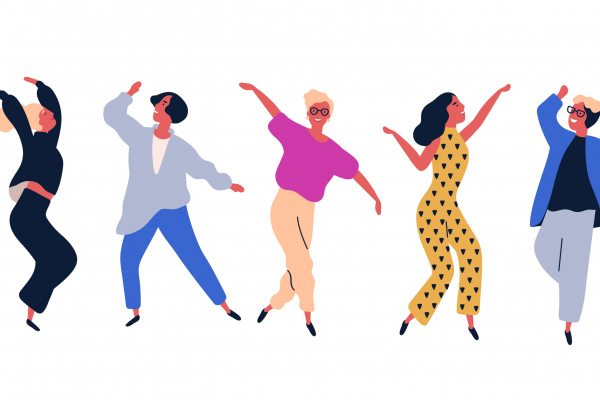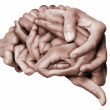What are gender issues and biases?
Bias exists in every facet of our daily lives. It’s impossible to escape it and we try to categorise things that occur in order to make sense of things. Biases however, lead us to form prejudiced opinions against others which in turn creates inequalities between different demographics.
Gender bias is a form of discrimation. It occurs against women more often than not, when their behaviours and beliefs reflect the values of the men who created the particular setting they’re in ie the workplace. There are so many varying factors that can influence gender roles such as society, family, social media. There are also practices that can be put into place to reduce gender bias with the aim of creating a more diverse and inclusive workplace.
What does gender bias mean?
Gender bias refers to the tendency to prefer a certain gender over another. Its seen as an unconscious bias whereby an individual will subconsciously link stereotypes to a group of people or person. This behaviour then shapes how that individual can connect with and understand others.
In today’s workplace, gender bias is commonplace when referring to the preferential treatment of men – in particular, white, hetrosexual males. ‘Sexism’ is the more widespread term that is used whereby women are discriminate against on the basis of their sex.
There are a number of other types of unconscious bias that can occur in addition to gender bias:
- Performance support bias: when more resources and support are available to one gender over another.
- Performance review bias: when despite being merit-based, evaluations are carried out differently between one gender and another.
- Performance reward bias: when rewards such as promotions, pay rises are rewarded differently between one gender and another.
- Glass ceiling: an accumulation of all these biases has led to the creation of a glass ceiling. This refers to the inability of minorities and/or women (in the most part) to be unable to rise up the professional ranks.
Let’s take a look at some stats around gender bias in the workplace.
- 42% of women experience gender discrimination at work.
- 5 of the top 14 barriers women face are related to gender bias.
- Women are 25-46% more likely to be hired with blind applications.
- Both men and women are twice as likely to hire a male candidate.
- 40% of men and women notice a double standard against female candidates.
- 23% of women are CEOs.
- Men view unconscious bias as the number one barrier for women in their careers.
- Women receive pay rises 5% less often than men.
And here’s some of the more common gender bias examples in the workplace.
- Recruiting strategies: both men and women are twice as likely to hire a man over a woman.
- Job descriptions: language can carry gendered associations so how descriptions are worded can appeal to one gender more than the other.
- Interview questions: if an interview is not standardised, the questions can be formed around personality, experience and gender.
- Professional development and career advancement: as mentioned, the glass ceiling effect can have a significant impact on career progression.
- Compensation and rewards: the gender pay gap ranges between men and women from 3% to a whopping 51%!
- Parental status: for working mothers discrepancies in pay, benefits and expectations are even broader for working mothers.
How Can You Reduce Gender Bias in the Workplace?
There are so many ways in which we can all be accountable and make an effort to recognise and act on gender bias. Here are a few that are supported by the collection of stats which can often make it easier to turn the unconscious into the conscious.
- Collect and look at bonus/compensation data.
- Collect and look at demographic data of employees.
- Run surveys specific to your team.
- Analyse your recruiting process and recognise gender bias in language.
- Use Artifical Intelligence in your recruiting process. Is the decision reached through AI the same as the one you’d have ended up at?
- Introduce gender bias training.
- Offer perks and benefits that appeal to all and have been commented on by all.
- Review your physical office space and make sure there are no biases within the office environment.
- Look at your Boardroom and diversify it. Is your Board primarily one gender? If it is, change it.
Our sistr panel on Smashing Gender Bias saw a fascinating debate between some phenomenal sistrs from backgrounds far and wide. Each sistr had their own unique standpoint, experience and views on gender bias, its prevalence and how to smash it. Have a listen to the webinar and listen to their views and opinions. Here’s a few powerful, take-home quotes from their discussion. As ever, we’re hugely grateful to our formidable panel guests for giving their time to sistr.
Jackie Adedeji – Podcaster, Journalist, Spokesperson.
“ We need to amplify and speak up. It’s not going to be easy. Put defensiveness to the side, it’s not an attack to have an opinion, we’re fighting the same system. We need to open doors and open rooms and collaborate to bring people into the same space. Make your voice matter everywhere you do”.
Cynthia Fortlage – 2SLGBTQIA+ Coach & Consultant.
“ We need to have the awareness that everyone has to challenge your own privilege. When you realise you have privilege you can create spaces and uplift others to speak for themselves. My job isn’t to speak for them, it’s to create the space for them to speak. See humans first, not the differences”.
Amy Kean – Diversity & Inclusion Consultant.
“There are topics that are obvious to change such as gender and race and there are topics that are harder to see to change such as neurodiversity and disability. We need to work to create spaces that cater for the visible and invisible biases and where one is often ignored, we need to make a plan to tackle it”.
Julia Elliott Brown – Investment Expert.
“The danger of echo chambers is that we’re talking to people who understand already and are like-minded. We need to educate the ones who cannot recognise bias or, who are choosing not to acknowledge it.”













